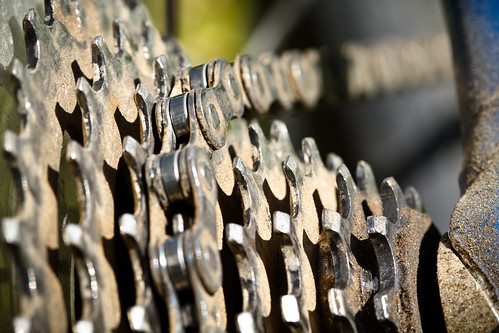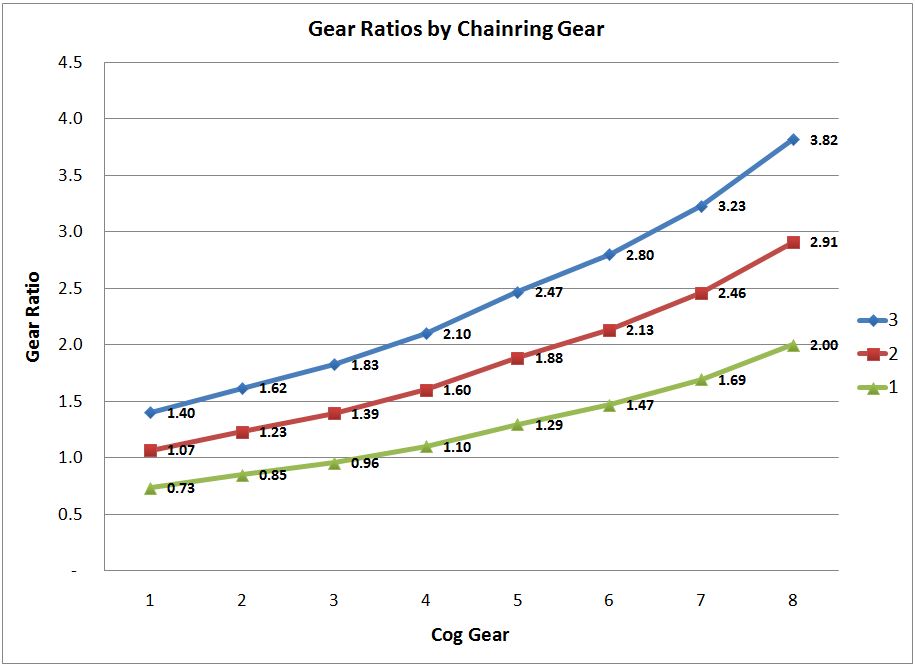I’m trying to get into great shape this summer, and among other things have taken up riding my bike again. I’m not an avid biker, so I haven’t spent any time learning about bicycle design and engineering, but the more I ride the more I discover about the intelligent decisions bicycle designers make. My bike is a Specialized Rockhopper, circa 2005 or so, but these are general observations certainly not specific to my ride.
Most interesting is how the shifters work to help you find your way efficiently around 24 different gear ratios. My rear cog has eight gears ranging from 11 to 30 teeth, the front chainring has three gears of 22, 32 and 42 teeth. Rather than think of it as 24 “speeds,” it’s much easier to think of it as three overlapping ranges, as mapped out below.
What works so beautifully is that the shifter levers on the handlebars work together seamlessly to move you between ranges. Using your thumb on both shifters moves the chainring higher and the cog gear lower, and your right thumb can downshift the cog gear by one, two or three speeds depending on how far you push. By downshifting two or three gears on the cog and upshifting one on the chainrail you effectively change to a higher range without significantly changing the gear ratio (and vice-versa with up/down shifting with your forefingers).
So what’s all that mumbo jumbo mean? It means that you can keep the same pedaling pace and power while a simple press of both thumbs or tug on both forefingers will set you up for better gear ratios as you approach a climb or descent.
Elegant.

